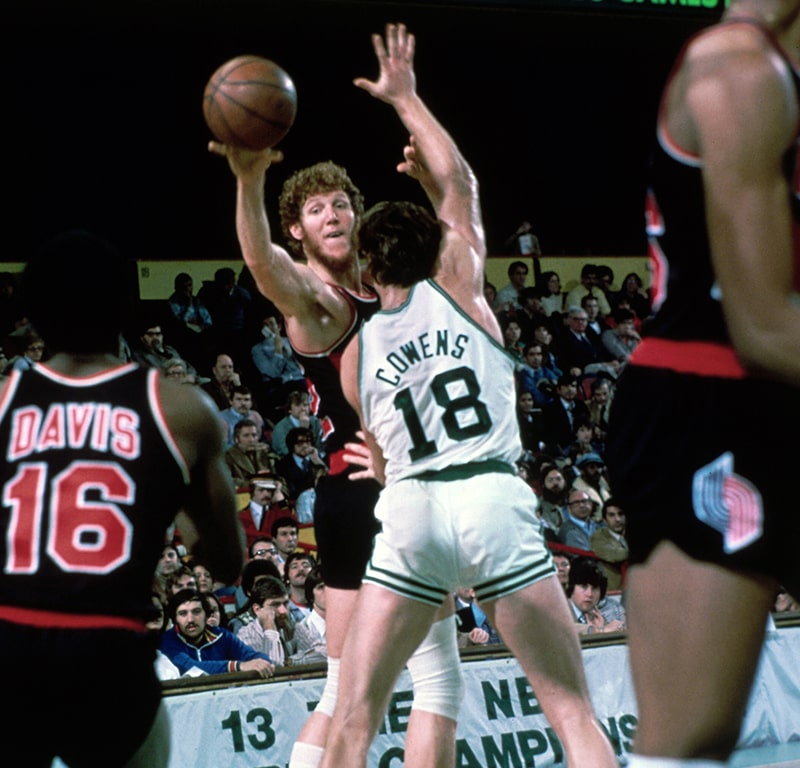
Bill Walton, the best basketball player to come out of San Diego, had big brother Bruce to guide the way in sports. Chase Budinger, the best basketball player since Bill Walton, had big sister Brittanie as well as big brother Duncan. Since this story first appeared on the sdhoc.com website on March 7, 2006, Budinger was named the CIF Player of the Year in basketball and volleyball after leading the Mavericks to Division I titles in both sports. The volleyball honor and titles were his third straight. 03-07-2006 By Tom Shanahan, San Diego Hall of Champions He’s the best basketball player to come out of San Diego not named Bill Walton. On this there should be no doubt after the performance La Costa Canyon High’s Chase Budinger put on Saturday night at the University of San Diego’s Jenny Craig Pavilion. He scored 50 points with 6-of-9 shooting from three-point range and 11 rebounds as the Mavericks beat Eastlake to win their first CIF San Diego Section Division I boys basketball title. Walton and Budinger are different types of players, of course. Walton -– a Basketball Hall-of-Famer — is a big man who came out of Helix High in 1970, an era when centers dominated the sport. Budinger is a 6-foot-8 swingman and McDonald’s All-American bound for Arizona in an era when the game revolves around open-court players with three-point shooting range. But here is another identity that separates the eras Walton and Budinger played basketball in San Diego. Budinger is a Title IX Boy. It’s a new identity to consider that says much about American sports in the 21st century. Labeling someone a Title IX athlete usually refers to the advent of girls in high school sports or women in college athletics. But another result of Title IX is now we see little brothers grow up learning sports from big sisters. Big Bill had big brother Bruce Walton, who preceded him at Helix, UCLA and as a professional athlete in the NFL with the Dallas Cowboys. Chase has big sister Brittanie, who preceded him at La Costa Canyon, as a college volleyball player at the University of San Francisco and as women’s professional volleyball player in Europe. If you went to one of Brittanie Budinger’s basketball games at La Costa Canyon a few years ago, Chase was that tall red-headed kid you saw running onto the court with other grade-schoolers. Chase followed Brittanie and middle sibling Duncan Budinger, a Long Beach State senior All-American volleyball player, as basketball-volleyball players at La Costa Canyon. “Ever since (Chase) was a little kid, he had to come to every single one of our games and he was at a lot of practices and club tournaments,” Brittanie said. “He was constantly watching our sports. He was always the little kid at halftime out on the court shooting the basketball.” A generation ago, big brother Duncan’s athletic career might have been the only one to gain Chase’s attention and respect. But since the advent of Title IX, boys grow up having accepted women and girls in sports as part of the athletic landscape. In youth sports they often compete with them and against them. Chase said Brittanie influenced him more in volleyball than basketball, which is significant. Chase is ranked the No. 1 high school volleyball player in the nation in addition to Top 10 in basketball and No. 1 in California by Student Sports, the most comprehensive prep ranking source. Chase said the volleyball skills he has picked up transferred to basketball. “I loved watching her play volleyball,” he said. “She was a little person out there playing big. She would bang on people, and you wouldn’t expect a 5-9 person to do that. Her biggest influence on me was she taught me to be a smart hitter. When you don’t have the angle to bang the ball, you have to tool it off or swing high — something like that.” Brittanie and Chase went on to explain that sometimes the sibling rivalry between sister and brother is less competitive and more productive than rivalries between brothers. In the sister/brother rivalry, the younger sibling remains more patient and accepting of advice. “Sometimes I’d play with my brother and when he tells me how to do things, I’d get mad,” Chase said. “It made me a tougher player, but sometimes it was too competitive.” Eventually, the family made a rule against basketball one-on-one games in the backyard between Duncan and Chase. But the sports mentoring time with Brittanie was always about improving skills and learning the game. There’s also this: One time when Chase was an eighth grader, Brittanie attended one of his youth basketball games and she thought he was getting too cocky on the court. She told him to cool it and let his play on the court do the talking. Years later Chase bowed his head and smiled as the story is being retold, making no attempt to deny that the All-American male athlete had heeded his big sister’s lecture. “She kicked my butt,” Chase said. Thanks to Title IX, that’s American sports in the 21st century.


 Beranda
Beranda
 Whatsapp
Whatsapp
 Daftar
Daftar
 Promosi
Promosi
 Telegram
Telegram